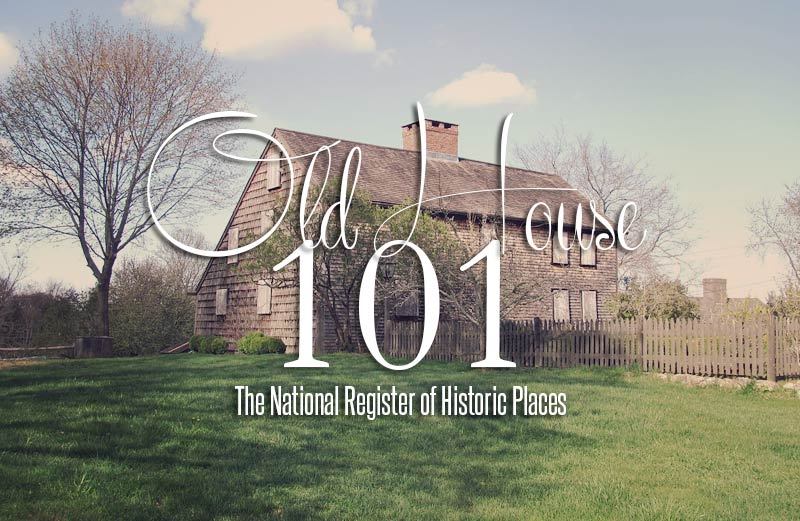by Jon Valalik (Photo Credit: Library of Congress)
Hello, and welcome to Old House 101! Today we’re talking about the great influence that George Washington had on Historic Preservation in the United States.
The practice of active historic preservation hasn’t always existed in the United States. By luck or circumstance, we do have a few samples from very early in American history, but it wasn’t until the mid 19th century that organized efforts began to seek out and save structures, monuments, and sites as memorials for important figures and educational tools for later generations. It’s no surprise, then, that one of the most important figures in the foundation of the United States was also, unintentionally, responsible for ushering into favor the idea of saving and showcasing these places.
George Washington left his mark all over the country, and monuments nationwide are a testament to his influence. Two of these sites can largely be credited for introducing the nation to what has now become a long tradition of historic preservation.
Washington’s Headquarters:
In Newburgh, New York, on a hill overlooking the Hudson River sits a stone house built by a merchant and militia colonel named Jonathan Hasbrouck. Hasbrouck constructed the home for his wife and children in 1750, but in the throws of the Revolutionary War the home was converted for use as a headquarters by Commander-in-Chief of the Continental Army, George Washington.
Washington spent over a year at the Hasbrouck House, from April 1782 to August 1783. His contribution to the establishment of the United States is certainly well known, and many of his ideas, which contributed to the philosophies of the country, were written about and publicized from this very building. While here, he successfully managed the Continental Army until the end of the Revolutionary war, influenced the writing of the Constitution, created what is considered the forerunner to the Purple Heart, and declined a nomination to become king, renouncing the idea of kingships in the new country entirely.

Washington’s Headquarters in Newburgh, NY. Unknown photographer Library of Congress.
It’s certainly understandable that the town of Newburgh and the state of New York might be proud of their temporary resident, and in 1850 they honored the occasion by making the home and property the first publicly operated historic site in the United States. The Hasbrouck House also has the unique claim as the first in a line of thousands of historic house museums, which now blanket the country.
Mt. Vernon:
Throughout his life, Washington spent time on Mt. Vernon, a now 400 acre property about 13 miles south of the United States Capitol Building, which had been in his family since the 1670s. He began leasing the land in 1754, after its owner and his half-brother, Lawrence, died of tuberculosis. At the time, the only house on the property was a one-and-a-half story building constructed by his father, Augustine Washington, in 1735. George began expanding the original structure in 1758 by adding an additional story. He inherited the property outright in 1762 and in 1774 began phase two of his remodel by adding wings at the north and south sides, the cupola, and the giant-order piazza facing the Potomac River.

George Washington’s home at Mt. Vernon. The off-center door is a vestige of the original home built by Augustine Washington in 1735. Photo credit Library of Congress.
Mt. Vernon is an important artifact not only for its legendary tenant but also for its architecture and what it represents. At the time of its construction, there were no professional, American-trained architects, and the work of amateur architects dotted the country. The work of these amateurs certainly influenced later builders, and indeed echoes the mentality of Americans to create something out of nothing, a new country perhaps.
Unfortunately, the value of such a unique relic wasn’t immediately recognized, and after Washington’s death in 1799 the estate fell into a progressive decline. That is until 1853, when the mother of Ann Pamela Cunningham, a South Carolina native, wrote to her daughter describing the sadness she felt after witnessing the decay of the home of the nation’s first President.
Cunningham’s disappointment matched her mother’s, and she began work to purchase Mt. Vernon from George Washington’s brother and the then owner, John Augustine Washington. Cunningham organized the Mt. Vernon Ladies Association and rallied efforts to convince the United States and the state of Virginia to purchase and restore the home and grounds to their original glory. After their initial efforts flopped, Cunningham and the Ladies Association went directly to John Augustine Washington and persuaded him to sell the home to them, in exchange for the promise to preserve it…and around $200,000.
The Mt. Vernon Ladies Association was the first national historic preservation organization in the United States. It’s contribution and inspiration towards future preservation efforts around the country is enormous, as it was the model of grassroots preservation efforts.
George Washington’s life and work were incalculably significant in the course of American and world history. Perhaps the nations most famous citizen, he left behind a footprint so valued by the American people that it inadvertently kick-started the preservation movement. Credit should be given to the countless people who helped to restore and preserve these important American artifacts, and aided in the birth of historic preservation in the United States, but it may not have happened when it did without the countries first president.

AUTHOR JON VALALIK
Jon grew up in South Carolina and studied Historic Preservation and Community Planning at the College of Charleston. His time in Charleston sowed a deep appreciation for both classical and vernacular styles and the importance of their conservation. He is currently working in Charlotte, North Carolina and hopes to break into the field of architectural preservation soon.




